02/06/2023
AVT Care App Early Intervened More Activities Interval 1-4
Here are some more activities that the parents/caregivers can do at home. Refer to our AVT Care App that is available at playstore (android only) and freely downloadable to know your child’s level and goals. Here is the link to download the app https://play.google.com/store/apps/details?id=com.avt.avt_care
Early Intervened Interval 1-Level 1
I AM AWARE OF SOUNDS
1. Hide & Sound
A family member hides and makes environmental sounds (clap hands/ winding toys/ phone ringing). Mother makes the child aware of the sound. Mother can direct child’s attention for listening, if the child doesn’t respond on his own. Try doing activity in a fun way and give appropriate language exposure.
Use phrases like:
“I heard that.”
“Oh! It’s Daddy. Daddy clap clap.”
“Give me high-five.”

2. Fun with water
A family member makes an environmental sound (like coughing, sneezing, cooker whistle, etc.). Immediately the mother, along with the child, throws a ball (or any other object) in water, after hearing that sound. Try doing the activity in a fun way and give appropriate language exposure.
Use phrases like:
“Oh, I heard that.”
“Toy jump, jump, jump.”
“Throw, throw the ball. Let’s throw.”

3. Playing with sounds
A toy making ‘sound’ can be used. Father can switch it on for the kid.
Look for the child’s reaction to be aware of the sound. Father can then, suddenly stop the sound (without the child noticing it or without any visual cue) and note the child’s reaction.
The parents can make comments like:
“No sound, No.”
“Sound come, come, come.”

Early Intervened Interval 1- Level 2
I KNOW FROM WHERE THE SOUND IS COMING
1. Looking at photo albums
Parent/Caregiver can sit along with the child and look through different photos. While introducing different family members, give appropriate language stimulation. Initially, parent/caregiver can introduce only those family members who are in child’s everyday contact.
Parents can use the following phrases:
“Ohh, look its Mummy.”
“I see daddy, do you see daddy?”
“Oh! Yes, this is Riya, my cute Riya.”

2. Bowling Pin
Parents can give the 6 Ling’s sounds one-by-one. Once the child hears it, he/she can throw the ball at the bottles. Involve other family members and play turn by turn so the child gets an idea what is expected from him/her. Give appropriate language while playing.
Use phrases like:
“Throw the ball, throw, throw.”
“Pick up bottles. Pick it up. Pick it up.”
“Throw the ball at aeroplane, aaaa, aaa.”

3. Fun with the torch
In a room, the father can sit with the child, with dim lights (if the child is not afraid of dark). Father can say different Learning to Listen sounds (LTLs).
If the child has change in facial expression, it can be reinforced with claps or hugs. When the child starts vocalizations or imitations on hearing sounds, daddy can hold a big torch and throw light on the picture whose LTLs was said.
Parents can use phrases like:
“The cow says muuuuu.”
“Wow! It looks nice. Wow! Wow!
“Here comes our dog, bho-bho, bho-bho.”

Early Intervened Interval 1- Level 3
I KNOW MY NAME
1. Find the toys
Parents can hide the LTLs toys or pictures (animals/vehicles/birds) in grain jars/ sand/baskets. Then, parents along with the child will make sounds associated with the toy and search for it. Finally, parents can find the toys, clean them and give appropriate language exposure.
Use phrases like:
“Let’s see what’s under this basket.”
“It’s an aeroplane, it says aaaaaaaa.”
“It goes up, up, up.”

2. Surprise Box
Parents can make a surprise game in which the child can pull out a toy from a box and make the sound associated with it (LTLs). Turn by turn this game can be played with other family members so the child understands what is expected from him/her. Play in a fun way and give appropriate language.
Parents can use phrases like:
“Yayy, let’s see what is in the box, in, in.”
“Take out your hand, take out, take out.”
“It’s a cow, she says muuuu.”

3. Story book reading
Mother can buy a book or make a story with different animal pictures attached in book. The mother can show pictures and make sounds of the animals/ vehicles. Continue this for few days, later on wait for child after you turn page, if the child says the sound associated with the object. Reinforce with claps or hugs for the same.
Use phrases like:
“Turn the page, turn, turn, turn.”
“Wow it’s a dog, bho-bho, bho-bho.”
“Look, the cat is coming, meow, meow.”

Early Intervened Interval 1- Level 4
I CAN UNDERSTAND RHYTHM OF SONG
1. Feeding the Toy
When the mother feeds the child, the child can sit along with a doll or teddy. The child can try to imitate the mother’s words by producing vocalizations. As the mother feeds the child, the child can feed the doll/ teddy.
Use phrases like:
“Wash your hands, wash, wash, wash.”
“Wipe your hands, wipe, wipe.”
“Eat, eat the banana, it’s mmmmm.”
“Open your mouth, open, open, open.”

2. Story book reading
Parents can make or buy picture books (Touch & Feel) of animals, vehicles, birds, etc. They can talk about the pictures and give
appropriate language. They can associate new
pictures with different sounds.
Use phrases like:
“Let’s open the book, open, open, open.”
“Wow, there is a lion, he says Roarrrr, roarrr”
“ Yes the dog is eating, mmmmm, it’s yummy.”

Early Intervened Interval 1- Level 5
I CAN MATCH SOUND WITH OBJECT
1. Family members on vehicles
Take toy vehicles and place each family member’s photo or puppet in the vehicle. While riding the vehicle, child can imitate the sound of the vehicle or the family member’s name. Give appropriate language exposure.
Use phrases like:
“Papa will go on the scooter, broom, broom.”
“Look, the wheels are going round and round, round and round.”
“Let’s take out the car, peep-peep, peep-peep.”
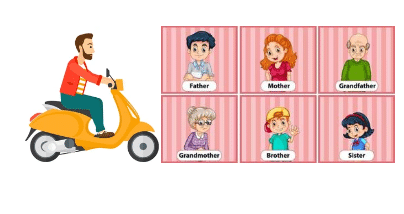
2. Feeding the farm animals
Keep various animals (cat, dog, sheep, etc.) in farm model (can be prepared at home) and feed these animals with different food items (water, food, etc.). Give appropriate language exposure while also concentrating on child’s speech and audition.
Use phrases like:
“Let’s give milk to the dog, bho-bho, bho-bho.”
“The water/milk fell. It’s dirty.”
“No no don’t touch.”

3. Craft activity
Making a road out of cardboard and riding different vehicles on it with vocalizations can be played.
Parents can use phrases like:
“Bike goes broooom, broooom.”
“Car goes peep -peep, peep-peep.”
“Stop the car, stop, stop.”
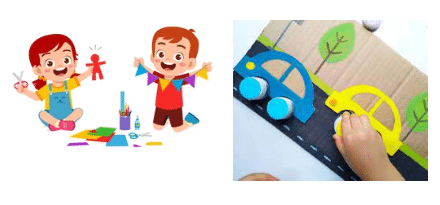
Early Intervened Interval 2- Level 6
I CAN HEAR FROM FAR
1. Animals & Vehicles on the road
Parents can draw or make a model of the road. Parents can use different pairs of LTLs (Train says uuuu v/s cow says muuu v/s bus says po po) and child can place them on the road or take them off the road. Continue the activity in a fun way and provide appropriate language.
For example: Parents can keep train (uuuu) and
cow (Muuu) and ask the child to
give the train that goes ‘uuuuu’.
Use phrases like:
“Give me the cow, she says Muuuuu.”
“Please give me the Train, uuuuuu”
“Oh, the bus is coming Po-po, Po-po.”
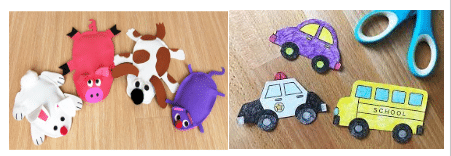
2. Eating with family
When the family is sitting for meals (breakfast, lunch or dinner), other family members can ask one of the parents to give different utensils or food items. Initially parents can act like a model and help the child to follow the language.
Use phrases like:
“Give me the spoon, spoon.”
“Pour the water, pour, pour.”
“Give daddy his plate, plate.”
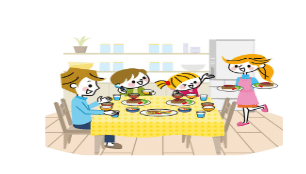
3. Making Banana Milkshake
At home, parents can use different fruits to make milkshakes (e.g.making banana milkshake) to increase the child’s vocabulary. Parents can also use different vegetables to make the child understand words like peel and cut.
Use phrases like:
“Cut the banana, cut, cut, cut.”
“Pour the milk, pour, pour. ”
“You want more milk, more, more.”
“Let’s put it in the mixer, mixer. ”

4. Indoor Activity
When the child has finished playing with LTLs toys, the mother can go and sit near him/her. Mother can then ask the child to give different toys from the group and say ‘bye-bye’ to keep them away.
Use phrases like:
“Let’s keep the toys in the basket, in, in, in.”
“Yes, the car is going, Peep-Peep, Bye-Bye car.”
“Hup-hup,the monkey is going in, Bye-Bye Monkey.”
“ Po- po, po- po. Bye-Bye bus.”

Early Intervened Interval 2- Level 7
I KNOW MY DAY-TO-DAY WORDS
1. Hide & Find
Different toys can be hidden at home at safe places. Parent/caregiver can go around with the child to find the toys. While doing so, language exposure can be given and the child can be encouraged to imitate or spontaneously say the LTLs.
Use phrases like:
“Where is Riya’s car?”
“Here is the car, Peep-Peep, Peep-Peep,”
“Give, give, give the car. Give to mumma.”

2. I want my toys
LTLs toys can be kept at a height (on a cupboard), wherein the child can see them, but not take them. Continue a few trials where the mother produces the LTLs of the toy she wants and gets it from the father. Initially the child might just imitate the sound mother is producing so reinforce him/her with the toy. Later on, let the child produce sounds on his own.
Here child will have to produce sounds of LTLs and try asking for each toy. For example:
if child says ‘aaaa’, plane will be given
‘Peep-peep’ then a car will be given.
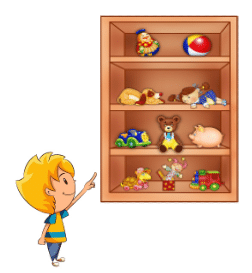
3. Sorting Clothes
Parents can sit along with the child, sort clothes for each family member, fold them and arrange the clothes in the cupboard.
While doing so, mother can give one cloth to the child and ask him/her to give it to his/her brother, sister, grandmother, etc. Reinforce when the child follows the command correctly.
Use phrases like:
“Let’s fold the shirt, fold, fold.”
“Yes, this is mumma’s dress.”
“Give the pant to grandpa, pant, pant.”
“Wow, Good job!”
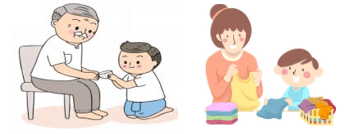
Early Intervened Interval 2- Level 8
I CAN GUESS LONG AND SHORT WORD
1. Dressing up boy/girl
Parents/ Caregivers can draw a picture of a child. They can make cutouts of clothes and stick with fevicol/ Velcro, the child can be encouraged to stick different clothing items. The Child can be given language exposure during this activity.
Similar activity can be done with a doll and the child can dress up the doll.
Use phrases like:
“Give me shirt. Shirt, shirt.”
“Let’s stick the pant. Pant, pant.”
“She wants to wear a frock. Wow pretty frock!”

2. Drying wet clothes
The child can be involved in the activity of drying wet clothes. Parents can give opportunities to the child to communicate and give appropriate language exposure.
Use phrases like:
“Give me the shirt.”
“Oh! the pants are wet, wet, wet.”
“Let’s put it in the sun.”
“Let’s hang the frock, frock.”

3. Book reading
Any picture book, which has multiple colour clothes or different food items can be shown to the child to target clothes related, food related vocabulary, simple action words, etc.
Use phrases like:
“Wow, see Raju is wearing a shirt like you, same-same.”
“Baby is crying, she is hungry.”
“Baby drink milk, yummy.”
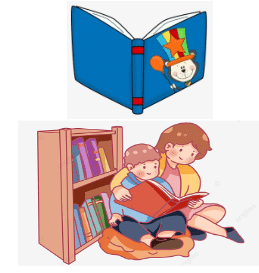
Early Intervened Interval 2- Level 9
I KNOW MY BODY PARTS
1. Making food item
Parents can involve the child in making any food item that the child likes and allow the child to take the lead. Give appropriate language exposure.
Use phrases like:
“Let’s spread the butter, spread, spread.”
“Look round-round tomato, mmmm tomato.”
“Now comes the Cucumber, let’s peel, peel, peel.”

2. Finger & Hand Stamping
Parents can take finger or hand stamping activities. They can involve the child and try to make some figures (animals, boys, etc.) Give the child an opportunity to communicate and use appropriate language exposure.
Use phrases like:
“Wow, so many colours on your fingers.”
“Let’s stamp it on the paper, stamp, stamp.”
“Yayy, that’s a boy. Here are his eyes, eyes.”
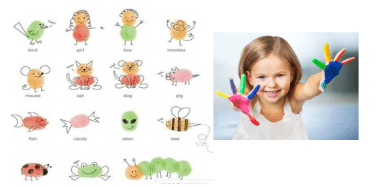
3. Playing with the Doll/ Teddy
When playing with an animal or child’s favourite toy like a teddy/doll, ask the child to point to their body parts. Compare the body parts/ clothes of the toy and the child.
Use phrases like:
“See it’s your teddy, he has small, small hands, small.”
“Wow, you have a big dress. It is big, big.”
“Riya’s doll is wearing a small dress.”

4. Sorting clothes
Mother and child can sit together, while mother is keeping clothes in the cupboard. While keeping clothes the mother can compare clothes of child v/s daddy or sister v/s mother for “Big and Small”. Mother can also make the child wear big clothes and compare.
Use phrases like:
“Look, daddy’s Big Shirt.”
“Riya’s Small- small Shirt.”

Early Intervened Interval 3- Level 10
I CAN SAY ONE WORD
1. Playing with play dough/ dough
Parents can play with the child using play dough/ clay/ sand/ mud. They can make different objects (tub, soap, car, etc.) along with the child. After making the object, they can paint it/ play with it. Initially one parent can make a few things and the other parent can be with the child.
Following phrases can be used-
“I made a ball. Roll it round, round, round.”
“It’s so soft-soft.”.
“What is this?”
“Look, I made a flower. Wow, pretty flower.”

2. Touch and Feel-modified
Make a box with just one hole in it, so the child can enter his hand in it. Play it with 2-3 members. One member puts his hand in the box and others can ask ‘What is it?’.
Start with other family members and lastly go to the child. This activity can help the child understands and say the question ‘What is it?’
Use phrases like:
“Yayy, let’s put the hand in, in, in.”
“What is it? Pull, pull, pull the hand out.”
“Wow, it’s a brush, eeeeee.”
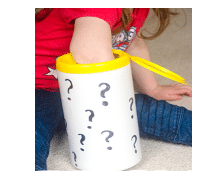
3. Breakfast/Lunch/Dinner Time
When the family is sitting for breakfast/ lunch/ dinner, few commands can be given to improve the child’s understanding in closed set and open set tasks. Repeat the command if the child did not understand. Also the same situation can be used to increase a child’s understanding of “What”questions.
Use phrases like:
“Give me a spoon, spoon.”
“Give a plate to papa. Plate, plate”
“What will you eat?
“Wow, it’s yummy, mmmm!”

Early Intervened interval 3- Level 11
I CAN REPEAT FEW WORDS
1. Simon Says
A Very fun loving indoor game of ‘Simon Says’ can be played with the child and a few more members. Different commands can be given to increase the child’s understanding of new verbs and ‘Noun+Verb’. Initially start with instructions that are one element and known to the child. Next move to ‘Noun+Verb’ commands where the child knows both the words.
Use commands like:
“Say Hi/ Bye.”
“Show mumma.”
“Drink water.”
“Hug Daddy.”

2. Make Fruit/ Vegetable Salad
Parents can involve the child in making fruit/ vegetable salad. Make it fun and let the child enjoy it while communicating.
Take this activity when a child is hungry.
Use phrases like:
“Open the fridge.”
“Let’s take out Apples, yummy apples.”
“Cut the apple, cut, cut.”
“Let’s make fruit salad, yummm.”

3. Let’s take a ride in a different vehicle
Stick family members or any known persons photos on ice cream sticks & take them to ride different vehicles. Use appropriate language having nouns, verbs, adjectives while doing this activity.
Use phrases like:
“Papa, sit in the car, Peep-peep, pee-peep.”
“Open the door, sit, sit. Close it, close, close.”
“Oh, stop the car, stop, stop.”

Early intervened interval 3- Level 12
I ENJOY RECORDED VOICE
1. Musical Chairs with Rhymes
Family members can play Musical chairs with the child. The person who doesn’t get a chair should dance/ do action of the rhyme played from the TV/ mobile. Involve the child in this activity and see if the child can identify the rhyme. Parent can show how to respond for 1-2 rounds and then let the child follow.
Use phrases like:
“Go round-round and dance.”
“Ohh! No sound, sit, sit on the the chair.”
“Yes! I heard Twinkle twinkle little star.”
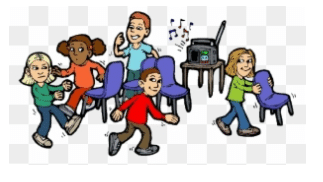
2. Colour the categories
Parents can make charts wherein different categorical objects are placed together (like animals, birds, fruits, etc.). The child can be asked to colour different categories when asked by the parent.
Use phrases like:
“Show me all the Fruits, fruits.”
“Oh! Where are all the animals?”
“Let’s colour all the animals. Wow! So many animals.”

3. Simon Says
A Very fun loving indoor game of ‘Simon Says’ can be played with the child and a few more members. Different commands can be given to increase the child’s understanding of new verbs, more than 2 verbs in a sentence.
Use commands like:
“Clap and sit down.”
“Turn and close your eyes.”
“Touch Mumma and run.”
“Keep hand on shoulder.”
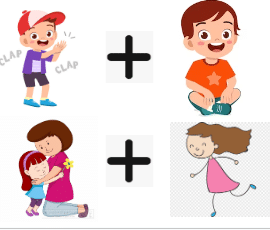
4. Listening to music
While singing poems that the child knows, the mother can either stop in between (for the words which the child knows) or lower her volume while singing to encourage the child to sing along. Reinforce immediately for the same.
For example: if the child knows the underlined words, parents can stop singing those words or reduce loudness for the child to say the words.
Twinkle Twinkle little Star,
How I wonder what you are?
Up above the world so high,
Like a diamond in the sky.
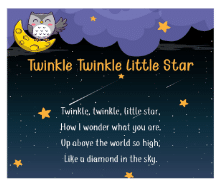
5. Who is in the house?
Parents can make a cardboard house with windows in it. Stick pictures of family members on ice cream sticks and place them in windows. While searching for the different family members in windows, give appropriate language exposure.
Parents can use phrases like:
“Oh! Who is behind the door?It’s papa.”
“Where do you sleep?Yes, on the Bed!!”
“Keep the Pillow and blanket on the bed.”
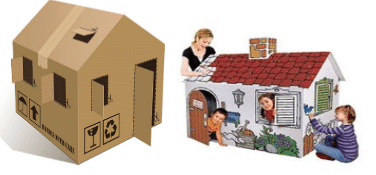
Early Intervened Interval 3- Level 13
I HAVE FUN WITH RHYMING WORD
1. Experience Book
Parents can make Experience books at home where they can capture pictures of the child playing in the garden, visiting a zoo, daily routine activities, etc. Stick 5-6 pictures related to the event and give appropriate language to the child. A lot of new words can be introduced, and child can try to speak words because of excitement while seeing his/her pictures.
Eg:A Day in the Playground
Use phrases like:
“Riya look, you are climbing on the slide.”
“Climb up, climb up. Wait, come down, down, down.”
“See, Raj is on the swing. He goes front and back.”

2. Dressing up a girl and a boy
Parents can keep a girl and a boy toy/ doll and dress them up along with the child. Try using vocabulary related to clothes, accessories, footwear, etc. and in a fun way to teach the child about gender.
Use phrases like:
“Let’s make the girl wear a pink frock.”
“Oh! She wants to wear some bangles. Put bangles.”
“Boy wants to wear a Belt on the Pant.”

3. A Walk in the garden
An outdoor activity of walking in the garden can be used.
Some different sentences that can be used are:
“Look, the plant is so small, it grows, grows.”
“The mud is dirty. Don’t touch.”
“Pluck a flower.”

4. Singing Rhymes
Parents can sing rhymes along with their children. Without any help, check if the child can do all actions of rhymes known to him on his own by understanding the full rhyme.
Early Intervened Interval 4- Level 14
I AM READY TO LISTEN IN NOISE
1. Tracing objects
Parents can involve the child in tracing different objects (like hand, stencil, etc.). After tracing, the child can colour the objects.
While doing the activity, parents can give appropriate language based on the goals.
Use phrases like:
“Please bring your pencil and eraser.”
“Let’s draw a peacock, put your hand on the paper.”
“Ohh, see your crayons are in the cupboard.”
“Where is the blue colour?”
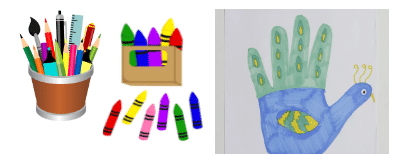
2. Packing school bag
The child, along with other siblings, can pack their bags for school. Parents can give appropriate language including verbs, nouns (related to items used in the school), adjectives and prepositions with 3 words auditory memory while doing the activity.
Use phrases like:
“Open your Bag and keep your Books.”
“Put Pencil, Eraser, Sharpner in the box.”
“Keep the Crayons with your drawing Book.”
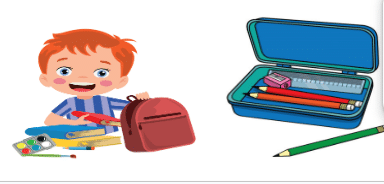
3. Drawing with stencil
Using stencil, trace the drawing/ shapes and coloring them. If a child is unable to draw on her own, parents can help the child to draw. Give appropriate language exposure.
Parents can use phrases like:
“Let’s take a pencil. Draw the star.”
“Oh oh! Let’s erase it. We will take erasers.”
“The pencil broke. Let’s sharpen.”

4. Listen Who Calls
Initially the mother can sit with the child to guide/ help during activity.
Start with 2 members only. Whenever some member says come to me, the child will listen properly to who said it and go to that member and get a positive reinforcement (hug, chocolate, music,etc.)Increase the difficulty after the child is confident in recognizing the voices of different family members.
Use phrases like:
“Riya let’s listen.”
“Yes Riya, Mumma is calling.”
“Come to me and take the chocolate.”
“Get me a spoon.” (some family member says it from behind during lunch/dinner)

5. Poems For ‘d’ sound
Poems can be used wherein the words are known to the child. Make sentences easier. Enact the poem in front of the child to make it more fun. After few trials, see if child can do closure or repeat few words with ‘d’. If the child does not produce /d/ clearly in words learnt earlier, use auditory sandwiching method (auditory then visual then auditory).
This can be helpful for clear production of sounds.
For example:
“Daisy Doll, Daisy Doll, tell us what you see?”
“Daddy Daddy is here.”
“Dog Dog I see a dog,”
“Daddy and Dog open the Door.”
“Daddy and dog go out for food.”

Early Intervened Interval 4- Level 15
I CAN SPEAK IN 1-2 WORDS
1. A Visit to Doctor
Whenever parents can take the child to visit a doctor or for a regular check-up, they can give the child exposure to language during the visit. Click pictures of the same, paste them in the Experience book and repeat the language exposure at home.
Use phrases like:
“Can we come in , Doctor?”
“Where did you get hurt?”
“Doctor is putting some medicine on it.”

2. Making Greeting card
Parents/ Caregivers can make a greeting card for different occasions, at home. Involve the child in the activity and give language exposure. Give the child opportunities to talk in the activity.
Use phrases like:
“Bring your paper and pencil”
“Let’s cut the flower.”
“Stick the pink flower.”
“Wow! It looks pretty.

3. Making Lemon Juice
Parents can make lemon juice along with the child and give appropriate language exposure related to the entire process. This activity can also help the child understand various tastes.
Use phrases like:
“Give me small lemons.”
“Do you want to taste lemon?”
“It’s so sour, sour.”
“Cut lemon. What do we cut with?”

4. Where?
Parents can try to hide all the child’s clothes. Child and father can search for clothes. Finally they can go to Mumma and ask (initially father will only ask and see if the child can imitate).
Use phrases like:
“Where is my shirt Mummy?”
“Oh, it’s under the chair.”
“Look, shoes and socks were together.”
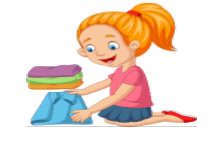
Early Intervened Interval 4- Level 16
I CAN DO 2 TASKS WITH ONE OBJECT
1. Show me
Parents can keep two things in front of the child and ask to give one. Once child can do it between two things/ cards, parents can do it at home in general situations.
For example, keep ‘bear’ and ‘pear’ in front of the child and ask the child, “Give me bear.”
Similarly, keep ‘pig’ and ‘big’ in front of the child and ask the child,
“Show me Pig.”
Once the child does it reinforces him/her. After the child is able to do this, generalize it in conversations.
For example,“Take the small bat and
keep on the mat.”
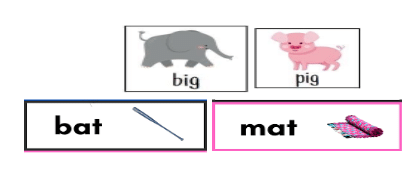
2. Passing the parcel- modified
The Child and other family members can play passing the parcel. The person who gets out of the game has to listen to the words said and pick up the correct picture card. Use two cards and help the child in the activity.
Eg: Coat v/s Goat, Doll v/s Tall, etc.
Use phrases like:
“Let’s listen to the song, Oh it stopped!”
“Pick up the doll and give me.”
“Show me the tall boy.”

3. Story/ Poem with /t/ words
Parents can make stories or poems with /t/ words for auditory bombardment of /t/ sound and saying words with /t/ sound.
After few trials, see if child can do closure or repeat few words with ‘t’
For example:
“Tommy tiger, Tommy tiger, will you talk to me?”
“Take your Teddy bear and come to play.”
“I have trains and trucks to see.”
“Come to my home, we will have tea.”

Early Intervened Interval 4- Level 17
I CAN DO 2 TASKS WITHOUT OBJECT
1. Making Lemon Juice
Parents can try to make lemon juice (or any other fruit juice) at home. Involve the child while making the juice.
Give appropriate language exposure.
Give opportunities to the child to talk or to lead.
Use phrases like:
“Do you want cold water or hot water?”
“Squeeze the lemons and pour the juice in the cup.”
“Let’s pour water and stir with the spoon.”
“Let’s open the fridge and take out two lemons.”

2. Arranging & Cleaning Kitchen
Parents can try to involve the child in arranging and cleaning the kitchen. They can give language exposure during cleaning.
Use phrases like:
“I am hungry, give me a plate and spoon.”
“Wipe the plate and give to Daddy”
“Give me big and small plates.”

3. Show me
Parents can keep two things in front of the child and ask to give one in presence of noise. (Noise like Background TV, music on, mixer running far away, etc.) Initially keep the noise at lower levels/ intensities and at a far distance.
Gradually the noise can be increased in intensity and noise can be near to the child. For example, parent can ask the child, “Give the spoon” when the spoon and the plates are kept in front of the child.
Once child can do it between two things/ cards, parents can do it at home in general situations.
Use phrases like:
“Riya, open the fridge and give me an apple.”
“Oh, I want to wash the plates. Give me soap and brush.”
“Close your eyes and turn around.”

This Blog was prepared by Montfort Team
Edited and supported by- Jenny G., Dhruvi Narasana and Slesha Jain
